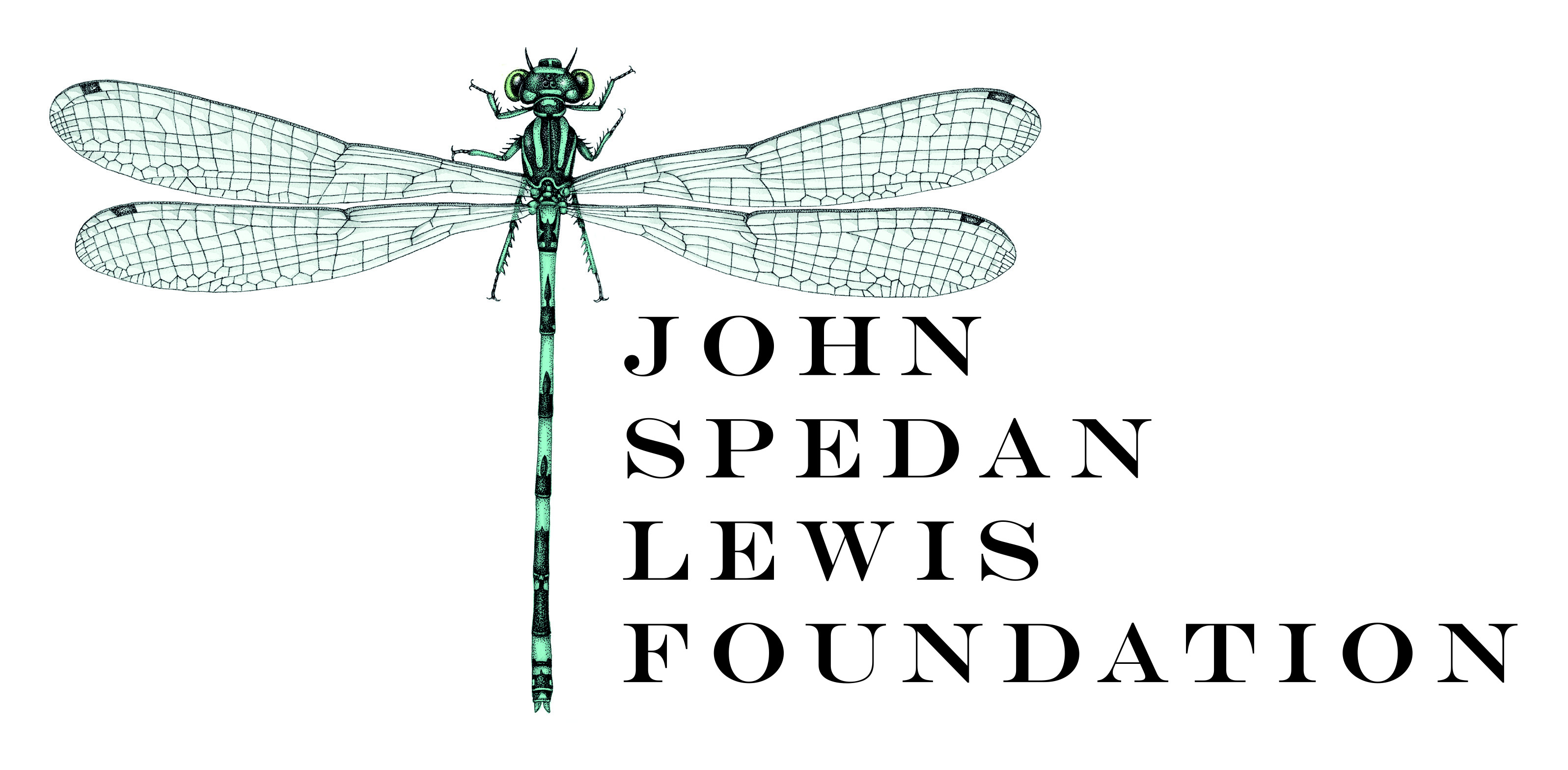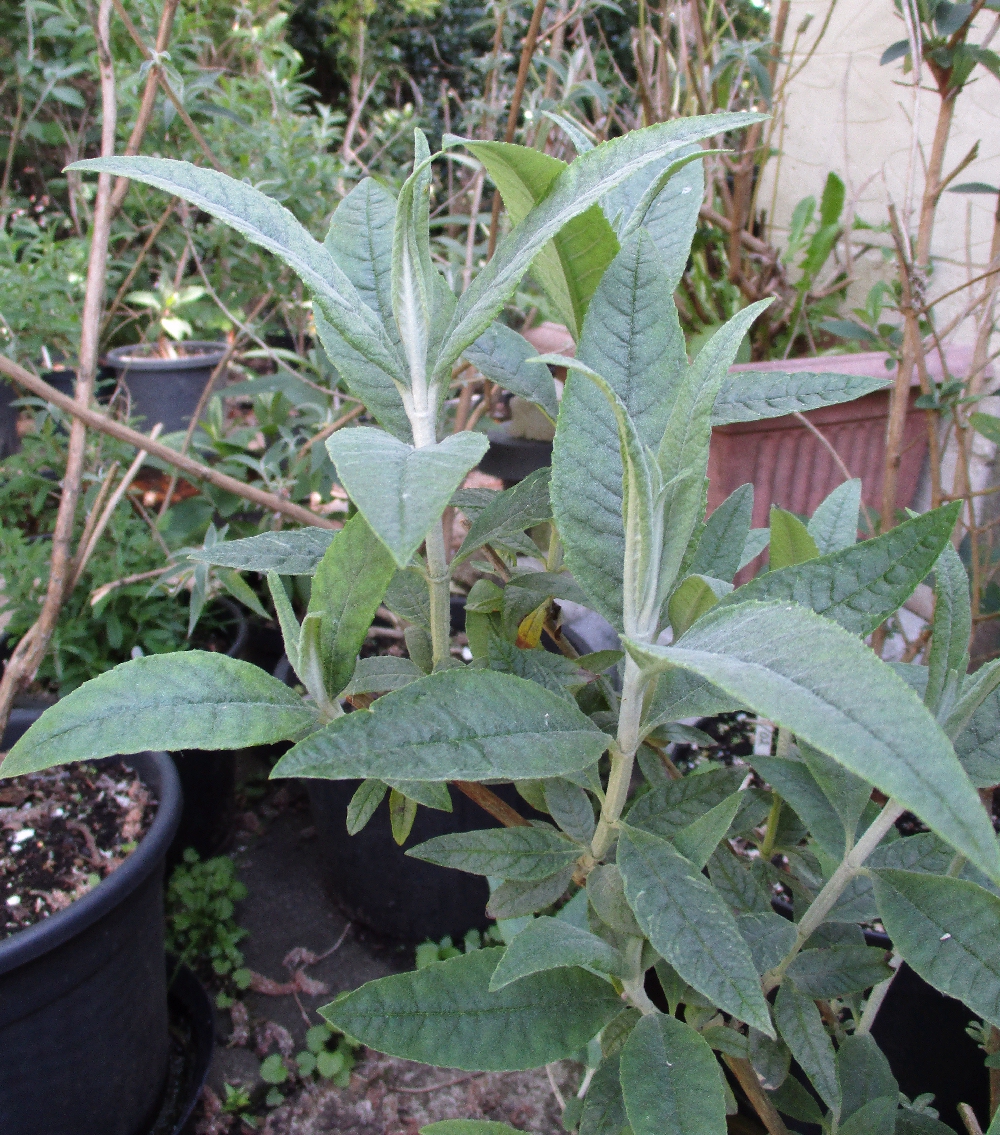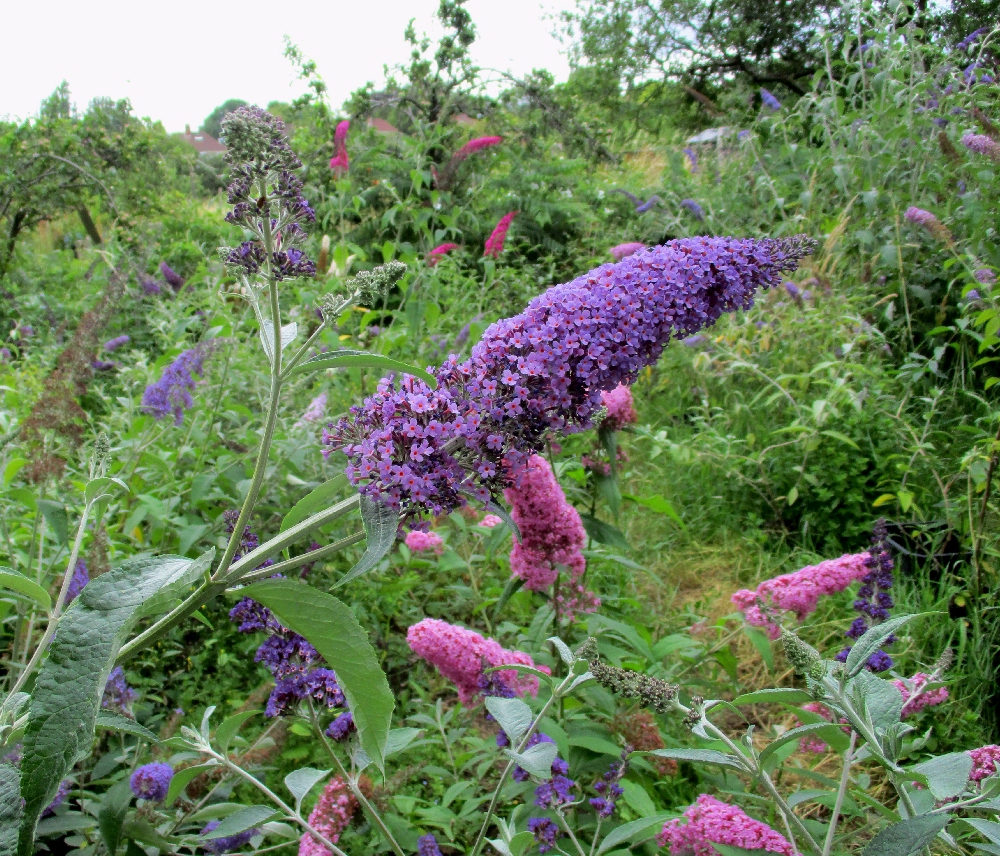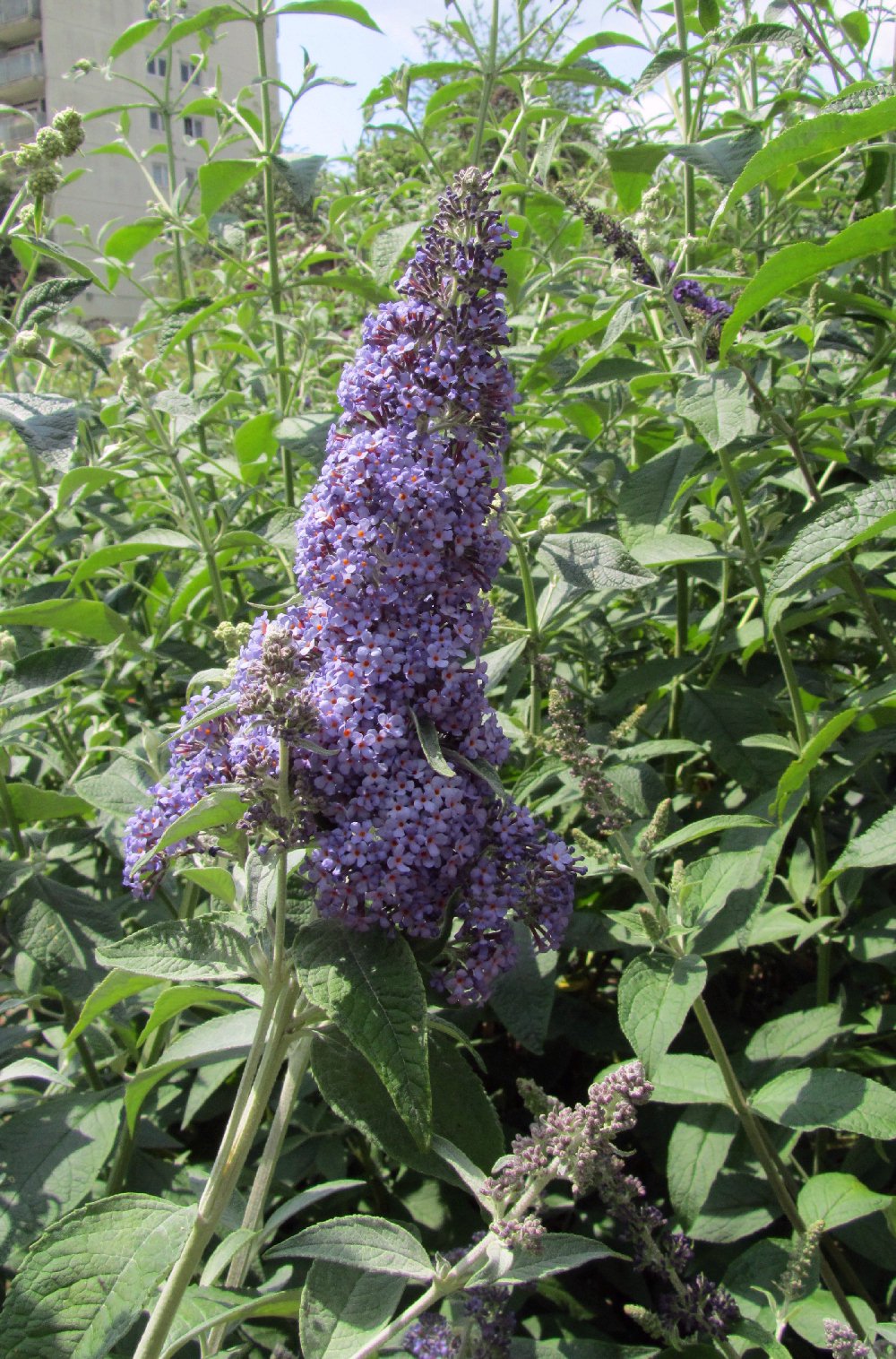Buddleja fallowiana × davidii
Sponsor
Kindly sponsored by
The John Spedan Lewis Foundation

Credits
Andrew Large (2021)
Recommended citation
Large, A.T. (2021), 'Buddleja fallowiana × davidii' from the website Trees and Shrubs Online (treesandshrubsonline.
Genus
Infraspecifics
Other taxa in genus
- Buddleja albiflora
- Buddleja alternifolia
- Buddleja araucana
- Buddleja asiatica
- Buddleja auriculata
- Buddleja caryopteridifolia
- Buddleja colvilei
- Buddleja cordata
- Buddleja crispa
- Buddleja crispa × lindleyana
- Buddleja curviflora
- Buddleja davidii
- Buddleja delavayi
- Buddleja fallowiana
- Buddleja FLUTTERBY™ Series
- Buddleja forrestii
- Buddleja globosa
- Buddleja glomerata
- Buddleja japonica
- Buddleja lindleyana
- Buddleja LO AND BEHOLD® Series
- Buddleja longiflora
- Buddleja loricata
- Buddleja × luteolufaucia
- Buddleja macrostachya
- Buddleja marrubiifolia
- Buddleja megalocephala
- Buddleja 'Miss Ruby'
- Buddleja 'Morning Mist'
- Buddleja myriantha
- Buddleja New Dwarf Hybrids
- Buddleja nivea
- Buddleja officinalis
- Buddleja 'Orange Sceptre'
- Buddleja paniculata
- Buddleja × pikei
- Buddleja 'Pink Delight'
- Buddleja saligna
- Buddleja 'Salmon Spheres'
- Buddleja salviifolia
- Buddleja 'Silver Frost'
- Buddleja speciosissima
- Buddleja 'Summer Beauty'
- Buddleja virgata
- Buddleja × wardii
- Buddleja × weyeriana
- Buddleja × weyeriana Hybrids
- Buddleja 'Winter Sun'
Shrubs, 1–5 m tall. Branchlets terete, densely stellate-tomentose. Leaves subsessile to petiolate, petioles up to 6 mm long; leaf-blade ovate to narrowly elliptic, 4–13 × 1–6.5 cm, both surfaces stellate tomentose. Inflorescence approximately as in B.fallowiana. Corolla as in B. davidii, but generally with more indumentum than usual; clayx campanulate; corolla tube 9 mm long, corllae violet or lilac. Stamens inserted above middle of the tube, approximately 3 mm below corolla mouth. Ovary obling, stellate-tomentose. (Leeuwenberg 1979; Li & Leeuwenberg 1996).
Distribution China Yunnan
USDA Hardiness Zone 7-9
RHS Hardiness Rating H5
Hydrids of B. davidii and B. fallowiana occur both in the wild and in cultivation where the two are grown together. The two species are closely related (Chau et al. 2017), differing mostly in the density of the indumentum on the branchlets, leaves and flowers; their natural ranges also have a significant overlap (Leeuwenberg 1979).
Cultivated forms of this hybrid have been selected for their attractive grey foliage, which is inherited as a dominant trait from B. fallowiana. The flowers, which appear at the same as those of the parents (July-August in the UK), are usually more showy, as in B. davidii, and the hybrids also have the advantage of being significantly hardier and more resilient to adverse conditions compared to B. fallowiana. The flower colour tends to lilac or violet, and is offset by the glaucous foliage. Two well-known cultivars, ‘Lochinch’ and ‘West Hill’, have been very successful and proved themselves excellent garden plants, hence have been awarded the RHS Award of Garden Merit. Others have not been so lucky and can be hard to source now.
A number of popular garden cultivars not specifically identified as B. fallowiana hybrids also have this species in their ancestry, for example ‘Ellen’s Blue, ‘Pink Delight’ and ‘Summer Beauty’ (Stuart 2006).
'Bishop's Violet'
Synonyms / alternative names
Buddleja 'Bishop's Violet'
‘Bishop’s Violet’, not to be confused with the deep purple ‘Bishop’s Velvet’, is an older hybrid of B. davidii and B. fallowiana raised by Neil Treseder of Treseder Nurseries in Cornwall, UK (Treseder Nurseries, pers. comm.). It has never enjoyed the popularity of ‘Lochinch’ or ‘Westhill’ and is relatively uncommon in cultivation. ‘Bishop’s Violet’ is a large, vigorous shrub with greyish-green foliage and inflorescences of a violet-mauve.
'Lochinch'
Synonyms / alternative names
Buddleja 'Lochinch'
Awards
AGM
‘Lochinch’ was raised from a chance seedling found in the garden at Lochinch Castle in south west Scotland, sometime around 1940. This garden is better known to many as Castle Kennedy Gardens, and the two buildings each sit within the same, remarkable designed landscape. This cultivar forms a dense shrub of about 2 metres height and spread. The foliage is grey and felted, and the branchlets covered in a white tomentum. The flowers, which are moderately showy, are lavender-violet (Stuart 2006). A very popular and widely avaiable hybrid, ‘Lochinch’ was awarded the RHS Award of Garden Merit in 1993, reconfirmed in 2010 (RHS Trials Office 2010).
'Mayford Purple'
Synonyms / alternative names
Buddleja 'Mayford Purple'
‘Mayford Purple’ is a sibling of ‘Lochinch’ and ‘West Hill’ and shares the same origin: Lochinch Castle in Scotland, c. 1940. ‘Mayford Purple’ was introduced to the trade by the Sunningdale Nursery (Surrey, UK), naming it for the nearby village of Mayford. The foliage is grey-green and the flowers a light purple (Hatch 2018–2020). ‘Mayford Purple’ has never enjoyed the popularity of its siblings, and today is rare in cultivation.
'Vashon Skies'
Synonyms / alternative names
Buddleja 'Vashon Skies'
An American hybrid raised by the Colvos Creek Gardens near Seattle and named after an island in Puget Sound. ‘Vashon Skies’ is a large shrub up to 2.5 metres in height with terminal panicles of blue-purple flowers (Hatch 2018–2020).
'West Hill'
Synonyms / alternative names
Buddleja 'West Hill'
Awards
AGM
‘West Hill’ is a sibling of ‘Lochinch’ and ‘Mayford Purple’, raised from a chance seedling found in the garden of Lochinch Castle, Scotland, c. 1940 and introduced to commerce by the Sunningdale Nursery (Surrey, UK) in 1959 (Hatch 2018–2020). It is a large and floriferous shrub, reaching at least 3 m height and spread once established. The foliage is large and grey-green; the flower panicles are large and upright, quite open, and a pale lilac-lavender colour which contrasts with the foliage (Stuart 2006). It has proved reasonable popular, but is less widely available compared to ‘Lochinch’. ‘West Hill’ received the RHS Award of Garden Merit following the Buddleja Euro-trials held at RHS Garden Wisley from 2008 to 2010 (RHS Trials Office 2010).



